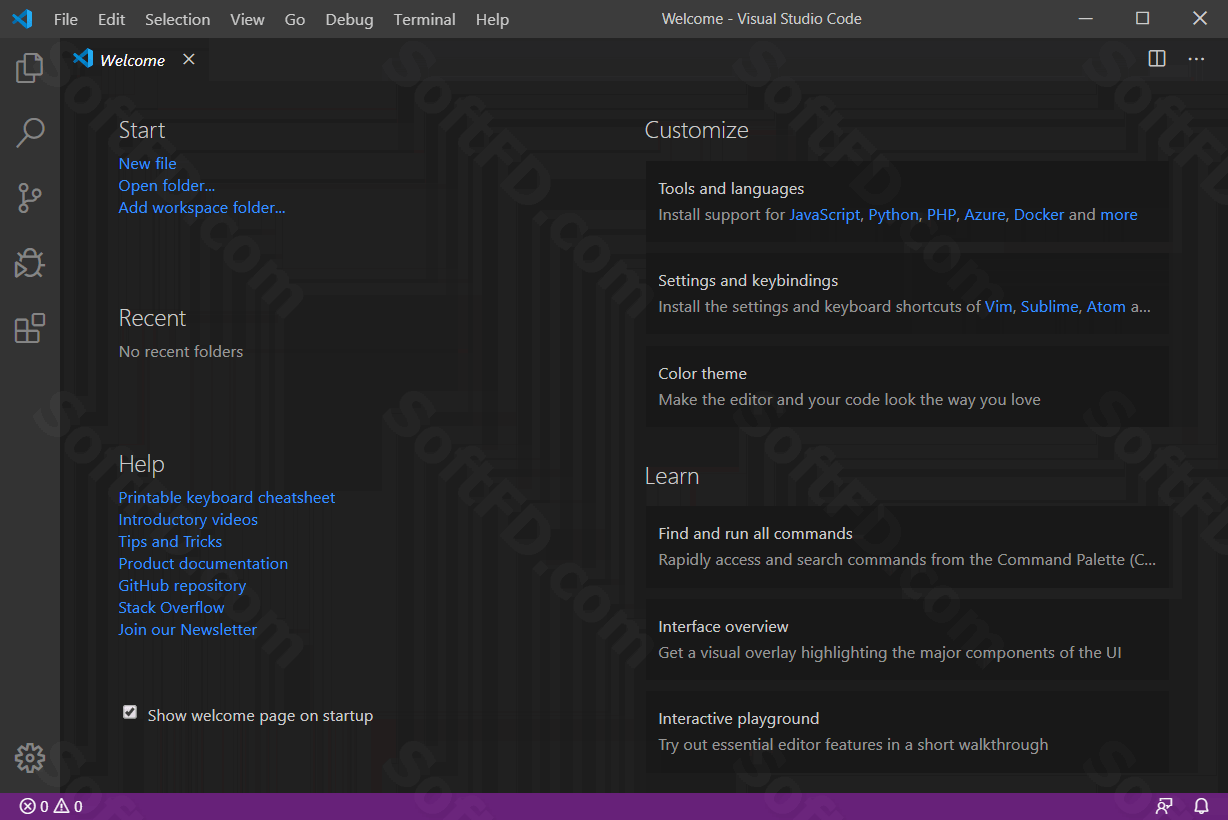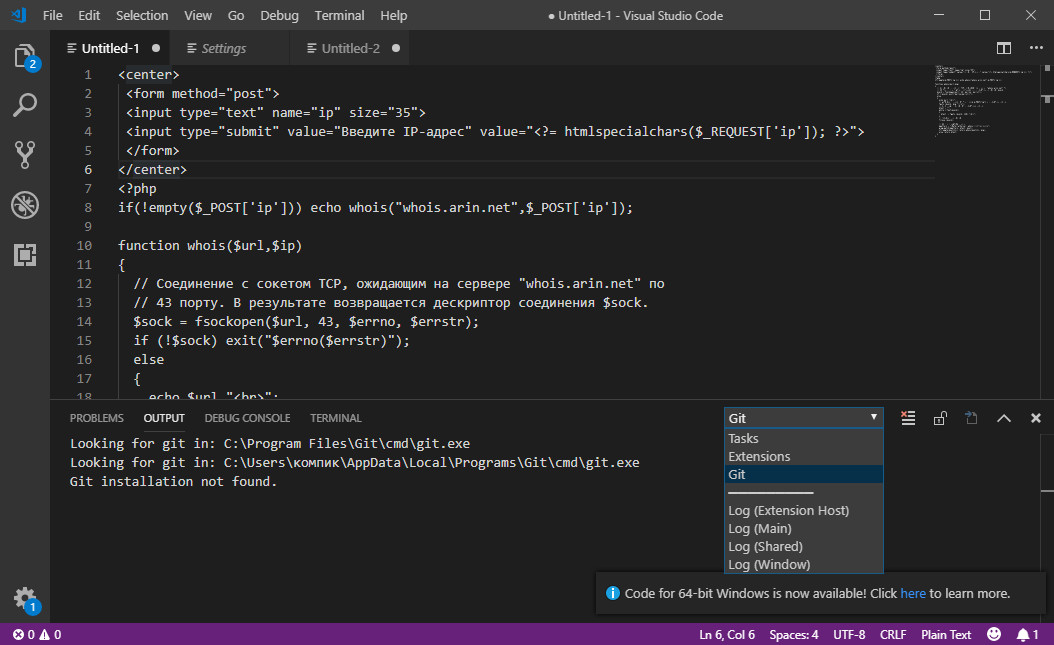Visual Studio 2010 Visual Studio 2010 follows the Fixed Lifecycle Policy. This applies to the following editions: Agents, All, ASP.NET MVC 4, Express, F# 2.0 Runtime, Lab Management, Performance Tools, Premium, Professional, Professional w/MSDN, PSM, Remote Debugger, SDK, Shell (Integrated), Shell (Isolated), Team Agents, Team Explorer, Test Professional, Tools for Office System 4.0 Runtime. Visual Studio 2010 Code Analysis - Run on Solution. Ask Question Asked 10 years, 5 months ago. Active 10 years, 5 months ago. Viewed 8k times 16. I would like to manually run code analysis for an entire solution, not on building the project, and not using FXCop, if possible. I did enable CA on build but it really, really slowed down the.
- Visual Studio Code For Beginners
- Visual Studio 2010 Express Download
- Visual Studio Code 2010 Download
- Download Microsoft Visual Studio Code 2010
- Visual Studio 2010 Community Download
- Visual Studio Code 2010 Sp1
- Visual Studio 2010 Download For Windows 10
The Code Metrics Viewer extension integrates the Code Metrics Power Tool 10.0 (provided by Microsoft) into Visual Studio Professional 2010. In order to use this extension, the Code Metrics Power Tool 10.0 application needs to be downloaded and installed separately.
The download can be found at:
http://www.microsoft.com/downloads/en/details.aspx?FamilyID=edd1dfb0-b9fe-4e90-b6a6-5ed6f6f6e615
I have created a project blog, where you can get all information about the extension:
http://codemetricsviewer.wordpress.com/tag/vs2010/
5.1 The event Procedure. Visual Basic 2010 is also an event driven programming language. Event driven means the user will decide what to do with the program, whether he/she wants to click the command button, or he/she wants to enter text in a text box, or he/she might wants to close the application and etc. Microsoft Visual Studio 2010 Professional. Write better-quality code, reduce security-related issues, and avoid bugs later in the development lifecycle. Microsoft Visual. Visual Studio Code is a code editor redefined and optimized for building and debugging modern web and cloud applications. Visual Studio Code is free and available on your favorite platform.
I am working on this extension in my leisure time - and I am sharing it with you for free. You, as a developer know at best that software is never perfect - and in some cases it might not work as expected. So, if you have any problems, please don´t hesitate to open a thread in the Q & A section or send me an email (you will find my email at the blog); I will try to do my best and I will respond as soon as possible. There is only one thing I am asking for... If you like the tool, please rate it!
What is Code Metrics Viewer and what is it for?
Well, the Code Metrics Power Tool calculates the maintainablity index, cyclomatic complexity, class coupling, depth of inheritance and lines of code for types and members of a specific assembly. Code metrics are more or less concerned about to measure evolvability of a software system, which is an indicator of the inner quality of software.
Visual Studio 2010 Professional does not support any calculation of code metrics. If you have missed that feature, then this extension is for you. The Code Metrics Viewer extension integrates the Code Metrics Power Tool 10.0 into the development environment and allows calcualtion of metrics whenever you want. Before you can analyze a solution, the tool path needs to be setup correctly in the options dialog.
Visual Studio Code For Beginners
How to get it working?
The extension comes up with it´s own options page, where you can specifiy the installation path of the Code Metrics Power Tool. Please have a look at the Readme-file provided together with the Code Metrics Power Tool 10.0 to find out the installation folder (might be: Microsoft Visual Studio 10.0Team ToolsStatic Analysis ToolsFxCop). The specified path shall not contain a filename (the extension will add the name of the executable). Consider that there is a difference in the path between 32- and 64-bit versions of Windows.
Visual Studio 2010 Express Download
Where can I find the Code Metrics Viewer in Visual Studio?
The Code Metrics Viewer window is accesible via the 'Other Windows' menu. You´ll also find the 'Code Metrics Viewer' command in the context menu of the solution root in the Solution Explorer.
How can I calculate code metrics?
Visual Studio Code 2010 Download
After a solution was loaded and successfully build, it can be analyzed by pressing the 'Analyze Solution' button. The Code Metrics Viewer will utilize the power tool to create the code metric report for each assembly in the solution. Depending on the solution size, this can take a while... The results will be shown in the grid.
The filter bar can be used to navigate quickly through the report.
Can I use the tool in Visual Studio 2012?
No, not this version... there´s another contribution that targets Code Metrics Power Tool 11.0 and Visual Studio 2012. See:/vsgallery/adceaf09-3fb8-47dc-91b3-cfb3f9b7fafa
Enjoy.
In the previous Lesson, you have learned that Visual Basic 2010 is an object oriented programming language. You have understood the meanings of class, object, encapsulation inheritance as well as polymorphism. You have also learned to write some simple programs without much understanding some underlying foundations and theories. In this Lesson, you will learn some basic theories about VB2010 programming but we will focus more on learning by doing, i.e. learning by writing programs .I will keep the theories short so that it would not be too difficult for beginners.
5.1 The event Procedure
Visual Basic 2010 is also an event driven programming language. Event driven means the user will decide what to do with the program, whether he/she wants to click the command button, or he/she wants to enter text in a text box, or he/she might wants to close the application and etc. An event is related to an object, it is an incident that happens to the object due to the action of the user , such as a click or pressing a key on the keyboard.
A class has events as it creates an instant of a class or an object. When we start a windows application in VB2010 in previous chapters, we will see a default form with the Form1 appears in the IDE, it is actually the Form1 Class that inherits from the Form class System.Windows.Forms.Form, as shown in the Form1 properties window in Figure 5.1.
When we click on any part of the form, we will see the code window as shown in Figure 5.2. The is the structure of an event procedure. In this case, the event procedure is to load Form1 and it starts with Private Sub and end with End Sub. This procedure includes the Form1 class and the Load event, and they are bind together with an underscore, i.e. Form_Load. It does nothing other than loading an empty form. You don't have to worry the rest of the stuff at the moment, they will be explained in later Lessons.
Download Microsoft Visual Studio Code 2010
In addition, there are other events associated with the Form1 class. These events are click, cursorChanged, DoubleClick, DragDrop, Enter and so on, as shown in Figure 5.2(It appears when you click on the upper right pane of the code window)
Figure 5.2 The Events
5.2 Writing the code
Now you are ready to write the code for the event procedure so that it will do something more than loading a blank form. The code must be entered between Private Sub.......End Sub. Let's enter the following code :
The first line of the code will change the title of the form to My First VB2010 Program, the second line will change the foreground object to Forest Green( in this case, it is a label that you insert into the form and change its name to Foreground) and the last line changes the background to Csyan color. The equal in the code actually is used to assign something to the object, like assigning yellow color to the foreground of the Form1 object (or an instance of Form1). Me is the name given to the Form1 class. We can also call those lines as Statements. So, the actions of the program will depend on the statements entered by the porgrammer.
The output is shown in the Figure 5.3
Visual Studio 2010 Community Download
Figure 5.3


Here is another example:
Visual Studio Code 2010 Sp1
In this example, you insert one command button into the form and rename its caption as Show Hidden Names. The keyword Dim is to declare variables name1, name2 and name3 as string, which means they can only handle text. The function MsgBox is to display the names in a message box that are joined together by the '&' signs. The output is as shown in Figure 5.4
Visual Studio 2010 Download For Windows 10
Figure 5.4
